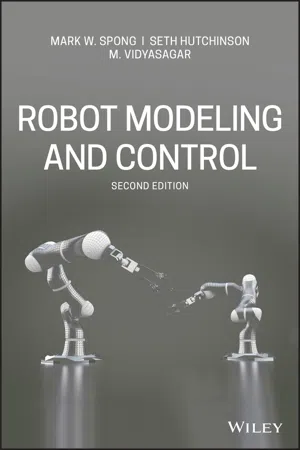
Robot Modeling and Control
Mark W. Spong, Seth Hutchinson, M. Vidyasagar
- English
- ePUB (apto para móviles)
- Disponible en iOS y Android
Robot Modeling and Control
Mark W. Spong, Seth Hutchinson, M. Vidyasagar
Información del libro
A New Edition Featuring Case Studies and Examples of the Fundamentals of Robot Kinematics, Dynamics, and Control
In the 2nd Edition of Robot Modeling and Control, students will cover the theoretical fundamentals and the latest technological advances in robot kinematics. With so much advancement in technology, from robotics to motion planning, society can implement more powerful and dynamic algorithms than ever before. This in-depth reference guide educates readers in four distinct parts; the first two serve as a guide to the fundamentals of robotics and motion control, while the last two dive more in-depth into control theory and nonlinear system analysis.
With the new edition, readers gain access to new case studies and thoroughly researched information covering topics such as:
? Motion-planning, collision avoidance, trajectory optimization, and control of robots
? Popular topics within the robotics industry and how they apply to various technologies
? An expanded set of examples, simulations, problems, and case studies
? Open-ended suggestions for students to apply the knowledge to real-life situations
A four-part reference essential for both undergraduate and graduate students, Robot Modeling and Control serves as a foundation for a solid education in robotics and motion planning.
Preguntas frecuentes
Información
CHAPTER 1
INTRODUCTION
